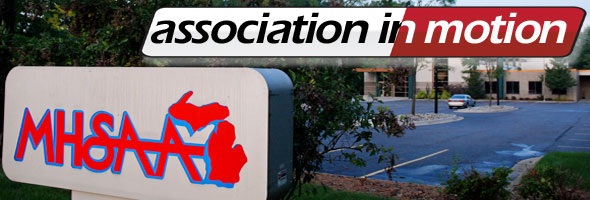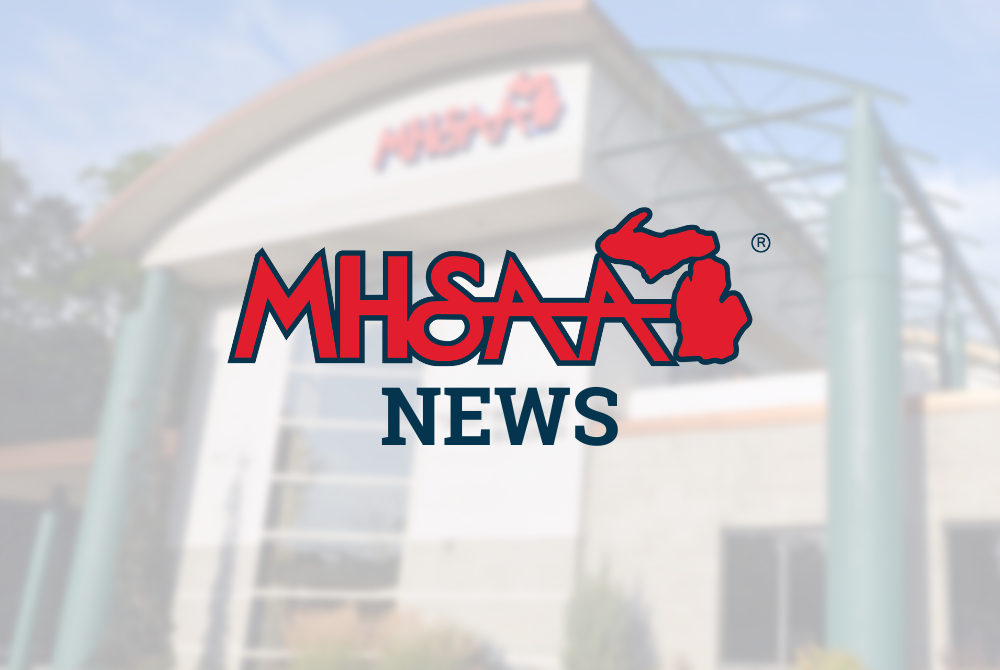
Multi-Sport Survey Helps Set Benchmark
July 31, 2018
By Geoff Kimmerly
Second Half editor
NOTE: This report includes a revision Aug. 3 to account for incorrect data for Jenison, which previously was listed with the second-highest percentage of multi-sport athletes in Class A. The updated data changed only two percentages updated below (*), and both by only one tenth of a percent.
Nearly 43 percent of athletes at Michigan High School Athletic Association member high schools participated in more than one sport during the 2017-18 school year, according to the first-ever Multi-Sport Participation Survey conducted this spring and inspired by the work of the MHSAA’s Task Force on Multi-Sport Participation.
Early and intense sport specialization has become one of the most serious issues related to health and safety at all levels of youth sports, as overuse injuries and burnout among athletes have been tied to chronic injuries and health-related problems later in life. In early 2016, the MHSAA appointed the Task Force on Multi-Sport Participation as part of a continued effort to promote and protect participant health and address the issues leading to early sport specialization.
While there is a growing amount of research detailing the negative effects of early sport specialization, there is little research on the prevalence of sport specialization, including at the high school level. This MHSAA survey received responses from 79.9 percent of member high schools and will be conducted annually to measure how multi-sport participation exists at schools of different sizes and also the progress being made to increase it at all schools.
“It’s now well-known that students who specialize in one sport year-round are prone to all kinds of health hazards. This is serious business; we have to find out the ways and means to promote the multi-sport experience,” MHSAA Executive Director John E. “Jack” Roberts said. “This survey will help us identify best practices. If I’m an administrator, and another school of the same size and same demographics has twice the multi-sport participation as my school, I want to know why. What are they doing to encourage that culture?”
From schools that responded to this year’s survey, 42.5 percent of students participated in athletics in 2017-18 – 46.3 percent of boys and 38.7 percent of girls. As anticipated, Class D schools enjoyed the highest percentage of athletes among the entire student body, at 55.2 percent, followed by Class C (50.1), Class B (45.1) and Class A (39.1*).
Of those athletes counted by responding schools, 42.8 percent participated in more than one sport – including 44.6 percent of boys and 40.6 percent of girls. Class D again enjoyed the highest percentage of multi-sport athletes, 58.1 percent, followed by Class C (55.2), Class B (46.7) and Class A (35.9*).
Similar results for overall sport participation and multi-sport participation relative to enrollment size were seen by further breaking down Class A into schools of fewer than 1,000 students, 1,000-1,500 students, 1,501-2,000 students and more than 2,000 students. For both sport participation as a whole and multi-sport participation specifically, the smallest Class A schools enjoyed the highest percentages, while percentages then decreased for every larger size group of schools.
The MHSAA Task Force on Multi-Sport Participation also recommended measuring multi-sport participation in MHSAA member schools to recognize “achievers” – that is, schools that surpass the norm given their enrollment and other factors that affect school sports participation. An achievement program is being developed for future years, and this year’s survey results will assist in setting a benchmark for that recognition.
In Class A, Marquette (82.6 percent), Grand Rapids Union (74.1) and Holland West Ottawa (74.0) posted the highest percentages of multi-sport athletes. In Class B, four schools achieved at least 80 percent multi-sport participation – Birch Run (87.1), Gladstone (83.8), Clawson (81.0) and Shepherd (80).
Class C saw 13 schools with more than 80 percent of its athletes taking part in more than one sport, led by Ubly (90.2 percent) and Detroit Southeastern (89.2). Four Class D schools responded at higher than 90 percent multi-sport participation – Brethren (95.4), DeTour (94.3), Jackson Christian (91.7) and Waterford Our Lady (90.8).
The full summary report on the Multi-Sport Participation Survey is available on the “Health & Safety” page of the MHSAA Website.

Survey Shows Small but Steady Rise of Multi-Sport Participation at MHSAA High Schools
By
Geoff Kimmerly
MHSAA.com senior editor
December 16, 2025
The Michigan High School Athletic Association’s seventh Multi-Sport Participation Survey, conducted last spring for the 2024-25 school year, showed small but continuing growth of multi-sport participation among athletes at member high schools.
The annual Multi-Sport Participation Survey was inspired by the MHSAA’s Task Force on Multi-Sport Participation, which was appointed in 2016 to study early and intense sport specialization – a serious issue related to health and safety at all levels of youth sports – and to promote multi-sport participation as a way to help stave off overuse injuries and burnout among athletes that have been tied to chronic injuries and health-related problems later in life.
The 2024-25 Multi-Sport Participation Survey received responses from 82.7 percent of member high schools and showed 45.4 percent of athletes at those MHSAA member high schools participating in two or more sports, an increase of six tenths of a percent from 2023-24. Multi-sport participation has shown increases every year of the study – and a combined increase of 2.6 percent since the first study after the 2017-18 school year.
For 2024-25, 47.8 percent of male athletes and 42.3 percent of female athletes played multiple sports. The percentage of multi-sport athletes remains inversely proportional to schools’ enrollments, as Class D schools again enjoyed the highest percentage of multi-sport athletes at 63.1 percent, followed by Class C schools (59.6), Class B (49.3) and Class A (38.5).
All four enrollment classifications also continued to show increasing multi-sport participation. Class A multi-sport participation increased three tenths of a percent from 2023-24 and is now up 2.6 percent from 2017-18 survey results. Class B increased 1.3 percent from the previous year and is also up 2.6 percent since 2017-18. Class C multi-sport participation grew two tenths of a percent over the previous year and sits 4.4 percent higher than the first study, and Class D multi-sport participation in 2024-25 remained the same as in 2023-24 and has grown five percent over the last seven years.
The MHSAA Task Force also recommended measuring multi-sport participation in MHSAA member schools to recognize “achievers” – that is, schools that surpass the norm.
Battle Creek Harper Creek, Detroit Cody and Grand Rapids Northview have appeared among the top 10 percent of their respective Classes six of the seven years the survey has been conducted. Four more schools have appeared among the top 10 percent of their Classes five of the seven years: Decatur, East Grand Rapids, Manton and Warren Michigan Collegiate. Detroit Douglass, Parma Western and Lake Leelanau St. Mary have appeared among the top 10 percent of their Classes four times apiece.
In Class A, Grand Rapids Northview (79.4 percent) posted the highest percentage of multi-sport athletes for 2024-25, followed by Macomb L’Anse Creuse North (70 percent), Detroit Cass Tech (61.4) and Sterling Heights Stevenson (60.7) also reporting at least 60 percent.
Warren Michigan Collegiate paced Class B schools with 91.3 percent of athletes playing multiple sports, followed by Tecumseh (77.7), Yale (76.6), Detroit Cody (71.4), Battle Creek Harper Creek (71.3) and Manistee (70.1). Class C saw six schools reach 80 percent for the second-straight school year, led by Jackson Lumen Christi (97.6 percent), Martin (89.7), Bad Axe (89.3), Cass City (88.6), Center Line Prep Academy (83.6) and Decatur (82.3).
Watervliet Grace Christian topped the Class D list at 93.8 percent of athletes participating in multiple sports. Next were Watersmeet (89.7), Lake Leelanau St. Mary (88.2), Detroit Douglass (87.8), Vestaburg (87.7) and Portland St. Patrick (87.3).
The full summary report on the Multi-Sport Participation Survey is available on the “Multi-Sports Benefits” page.

